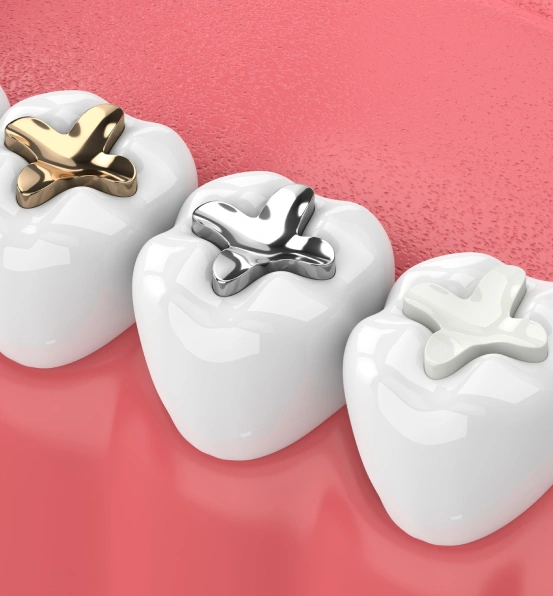
Natural-looking, Durable Solutions for a Healthy Smile
Composite fillings – also known as tooth-colored fillings – are dental restorations designed to be inconspicuous and natural in appearance. They blend well with the teeth and appear more natural than amalgam fillings, which are darker and more easily seen by other people. Composite fillings are made of ceramic and plastic compounds that chemically bond to the teeth. They can be used to fill in decayed areas of the teeth, as well as to help repair chipped or broken teeth. Most dentists use composite restorations to treat the teeth closest to the front of the mouth, as they are more noticeable when patients smile. However, advancements in dental technology and the composition of composite fillings have made it possible for dentists to also use tooth-colored fillings on molars, which receive more wear than other teeth.
Did you know…
that composite fillings allow dentists to preserve more of the natural tooth structure? This is because composite materials chemically bond to the surface of the tooth like an adhesive. The process takes slightly longer to complete than traditional amalgam fillings, but patients can preserve more of the natural portion of the teeth while enjoying a restoration that is discreet and understated.
Stronger Teeth With Tooth-colored Restorations
Today's dental fillings offer much more than cavity repair. These versatile treatments can fix teeth that have been damaged by chips, fractures, or everyday wear. With high-quality materials and proven methods, your dentist can rebuild and strengthen compromised teeth while maintaining a beautiful, natural appearance.
Composite fillings work well for:
- Treating small and medium-sized decay
- Repairing minor tooth damage or fractures
- Updating outdated silver amalgam fillings
Signs You May Need a Filling
Sharp or lingering sensitivity when eating or drinking can signal a problem that needs attention. Discomfort from hot, cold, or sweet items may indicate tooth decay or tiny fractures. Other warning signs include a rough or chipped edge, a dark spot that doesn’t brush away, floss that shreds or catches between teeth, food packing in one area, or pain when biting. If any of these persist, an evaluation can help prevent complications and keep treatment simpler.
The Filling Treatment Process
Placing a tooth-colored (composite) filling is comfortable and efficient. Here’s what typically happens:
- Comfort First: Numbing is offered as needed so you stay comfortable.
- Shade Match: The material is matched to your tooth for a natural look.
- Isolation: The tooth is kept dry to ensure a strong bond.
- Conservative Cleaning: Only the damaged or decayed area is removed.
- Bonding: The tooth is prepared, then a bonding agent is applied.
- Layering and Curing: Composite is placed in thin layers and light-cured for strength.
- Shaping and Polishing: The restoration is contoured to blend in and feel smooth.
- Bite Check: Your bite is adjusted so the tooth feels natural when you close.
